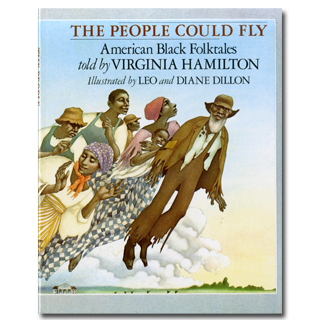
A FEW OTHER EVENTS FOR
AUGUST 23:
- Happy birthday Melvin Berger (Germs Make Me Sick!).
- In 79 A.D. Mount Vesuvius, in what is now Italy, begins stirring on the feast day of Vulcan, the Roman god of fire. Read Bodies from the Ash: Life and Death in Ancient Pompeii by James M. Deem, Pompeii Lost and Found by Mary Pope Osborne, illustrated by Bonnie Christensen, and Danger! Volcanoes by Seymour Simon.
- In 1966, Lunar Orbiter 1 takes the first photograph of Earth from orbit around the Moon. Read Earth: Our Planet in Space by Seymour Simon.
- It’s National Sponge Cake Day. Read Good Work, Amelia Bedelia by Peggy Parish, illustrated by Lynn Sweet.
August 23 of each year has been designated by UNESCO as the International Day for the Remembrance of the Slave Trade and Its Abolition. This date was chosen because from August 22–23, 1791, an uprising began on the island of Saint Domingue, now Haiti, which helped bring about the end of the slave trade. If you want to introduce children eight through twelve to the topic of the day, then I recommend a classic, Virginia Hamilton’s The People Could Fly. And on August 26 I’ll look at a new book for older readers, M. T. Anderson’s The Astonishing Life of Octavian Nothing.
Certainly the most awarded writer of her generation, Hamilton received the Newbery Medal, the first McArthur Genius grant to a children’s book writer, the Hans Christian Anderson Award, the Laura Ingalls Wilder Award, and the National Book Award. The list got longer every year of her life. As a student at Antioch College, she met Janet Schulman, who became publisher of Random House’s Children’s book department. Hamilton had just had an adult novel rejected and mentioned this to Janet, who suggested that she go back to a story of a Watutsi princess, written in college, for the subject of a children’s novel. That book, Zeely, would launch Hamilton’s career in 1967.
During the eighties, Schulman observed that there were no anthologies of African American folktales for children. She knew that Hamilton had always been interested in the stories that grew out of slavery and suggested that she pull together a large volume of these, making them accessible to children and families. In The People Could Fly, Hamilton gathered slave stories and rewrote them in her own beautiful literary style.
In this attractive volume, oversized and illustrated by Leo and Diane Dillon, two dozen slave stories are arranged according to theme: animals; the real, the extravagant, and the fanciful; the supernatural; and freedom. Certainly one of the most commercially successful books about African American culture during the eighties, the book attracted a lot of attention in the press and became a staple of school and public library collections.
I always think The People Could Fly is one of the best ways to introduce Virginia Hamilton to those who may have missed this singular author. I am so sorry that I can no longer hear her tell her spell-binding tales. No one could hold an audience in the palm of their hand as easily as Virginia Hamilton. But collections like The People Could Fly allow readers to hear her voice in narrative.
Here’s a passage from The People Could Fly:
The mare and Jake had to climb across the leaves to keep goin. And then there were pumpkins house high. The hogs was eatin inside ofum and livin in there. So Jake and the horse ridin on through. Get on back to Papa John. Real upset, Jake was, and told him what happen.Â
Papa John soothes him, “That’s all right, that’s all right. Nothin gone get you next to me here,” Papa John said. “That wasn’t much of a pumpkin seed to begin with. You shoulda been around when I was a turnip grower.”
“You a turnip grower, Papa?” asked Jake.
“Was one time,” Papa John said. “I plowed me two acre. I got me a mountain of manure and spread it on thick. Then I put down the turnip seed.”
“What happened?” Jake asked him.
“Well, all a sudden,” Papa John says, “that manure was slopped up. That turnip grew so, a herd of cows would get under a turnip leaf and sleep all day. So I had to fence it. Keep all out. Took me six months to fence around that turnip, too.”
Â
Originally posted August 23, 2011. Updated for 2024.














Her retellings are beatuiful, and who better than Leo and Diane Dillon to illustrate them! This book is a treasure that should grace every child’s/adult’s/family’s shelf.
Janet Schulman launched so many careers and a boatload of books with her creative editorial approach. Pompeii, tomorrow’s book, is also a Janet Schulman book. We miss her.
This is so funny… I was just re-reading my copy of this book the other day! The stories in this volume captivated me as a middle school reader, and they still do today. Thank you for the post on it!
Bonnie: Thanks for the note on Janet. As you know from personal experience, she was a truly inspired editor. She had a grasp of the big picture in publishing like few others. We do miss her.
This is one of the few books on Anita’s list I’ve not read yet. The art looks wonderful.
My library branch has it coming for me now.